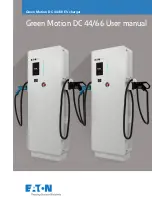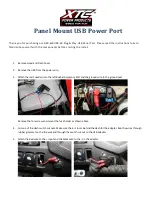
You will find the applicable permissible val-
ues, which must not be exceeded, in the vehi-
cle documents. You will find the values
approved by the manufacturer on the vehicle
identification plates and those for the towing
vehicle in the "Technical data" section
(
Couple and uncouple the trailer carefully. If
you do not couple the trailer to the towing
vehicle correctly, the trailer could become
detached.
Make sure that the following values are not
exceeded:
R
the permissible trailer drawbar noseweight
R
the permissible trailer load
R
the permissible rear axle load of the towing
vehicle
R
the maximum permissible gross vehicle
weight of both the towing vehicle and the
trailer
When towing a trailer, your vehicle's handling
characteristics will be different in comparison
to when driving without a trailer.
The vehicle/trailer combination:
R
is heavier
R
is restricted in its acceleration and gradi-
ent-climbing capability
R
has an increased braking distance
R
is affected more by strong crosswinds
R
demands more sensitive steering
R
has a larger turning circle
This can impair the vehicle's handling char-
acteristics.
When towing a trailer, always adjust your
speed to the current road and weather con-
ditions. Do not exceed the maximum permis-
sible speed for your vehicle/trailer combina-
tion.
General notes
!
Use a drawbar noseweight as close to the
maximum permissible noseweight as pos-
sible. Do not use a noseweight of less than
80 kg; otherwise, the trailer may come
loose.
Note that the payload and the rear axle load
are reduced by the actual payload.
i
When towing a trailer, set the tyre pres-
sure on the rear axle of the towing vehicle
for a maximum load; see the tyre pressure
table in the fuel filler flap (
You will find installation dimensions and loads
in the technical data (
The maximum permissible trailer drawbar
noseweight on the ball coupling is 140 kg.
However, the actual noseweight must not
exceed the value given on the trailer identifi-
cation plate or the trailer tow hitch. The low-
est weight applies.
i
When towing a trailer, set the tyre pres-
sure on the rear axle of the towing vehicle
for a maximum load; see the tyre pressure
table in the fuel filler flap (
i
On vehicles without level control, the
height of the ball coupling will alter accord-
ing to the load placed on the vehicle. If nec-
essary, use a trailer with a height-adjusta-
ble drawbar.
Driving tips
X
On long and steep downhill gradients,
select shift range
1, 2 or 3 (
good time.
X
If necessary, shift the transfer case to
LOW (
You make use of the braking effect of the
engine and therefore need to brake less.
This relieves the load on the brake system
and prevents the brakes from overheating
and wearing too quickly. If you need addi-
tional braking, depress the brake pedal
repeatedly rather than continuously.
The maximum permissible speed for vehicle/
trailer combinations depends on the type of
trailer. Before beginning the journey, check
the trailer's documents to see what the max-
imum permitted speed is. Observe the legally
114
Towing a trailer
Driving and parking
Summary of Contents for G-Class
Page 1: ...G Class Owner s Manual Nur f r internen Gebrauch For internal use only...
Page 4: ......
Page 19: ...Cockpit 18 Instrument cluster 19 Centre console 21 17 At a glance...
Page 50: ...48...
Page 58: ...56...
Page 78: ...76...
Page 86: ...84...
Page 128: ...126...
Page 141: ...Useful information 140 Engine compartment 140 Service 145 Care 147 139 Maintenance and care...
Page 154: ...152...
Page 174: ...172...
Page 188: ...186...
Page 205: ...203...
Page 206: ...204...
















































